Year 1
How my world is different from the past and can change in the future
The Year 1 curriculum provides a study of the recent past, the present and the near future within the context of the student's own world. Students are given opportunities to explore how changes occur over time in relation to themselves, their own families, and the places they and others belong to. They examine their daily family life and how it is the same as and different to previous generations. They investigate their place and other places, their natural, managed and constructed features, and the activities located in them. They explore daily and seasonal weather patterns and how different groups describe them. They anticipate near future events such as personal milestones and seasons. The idea of active citizenship is introduced as students explore family roles and responsibilities and ways people care for places.
The content provides opportunities for students to develop humanities and social sciences understanding through key concepts including significance; continuity and change; place and space; roles, rights and responsibilities; and perspectives and action. These concepts may provide a focus for inquiries and be investigated across sub-strands or within a particular sub-strand context.
The content at this year level is organised into two strands: knowledge and understanding, and inquiry and skills. The knowledge and understanding strand draws from two sub-strands: history and geography. These strands (knowledge and understanding, and inquiry and skills) are interrelated and have been developed to be taught in an integrated way, which may include integrating with content from the sub-strands and from other learning areas, and in ways that are appropriate to specific local contexts. The order and detail in which they are taught are programming decisions.
Inquiry Questions
A framework for developing students' knowledge, understanding and skills is provided by inquiry questions. The following inquiry questions allow for connections to be made across the sub-strands and may be used or adapted to suit local contexts: inquiry questions are also provided for each sub-strand that may enable connections within the humanities and social sciences learning area or across other learning areas.
- How has family life and the place we live in changed over time?
- What events, activities and places do I care about? Why?
(source: www.australiancurriculum.edu.au)
Achievement Standard
By the end of Year 1, students identify and describe important dates and changes in their own lives. They explain how some aspects of daily life have changed over recent time while others have remained the same. They identify and describe the features of places and their location at a local scale and identify changes to the features of places. They recognise that people describe the features of places differently and describe how places can be cared for.
Students respond to questions about the recent past and familiar and unfamiliar places by collecting and interpreting information and data from observations and from sources provided. They sequence personal and family events in order and represent the location of different places and their features on labelled maps. They reflect on their learning to suggest ways they can care for places. They share stories about the past, and present observations and findings using everyday terms to denote the passing of time and to describe direction and location.
(source: www.australiancurriculum.edu.au)
Achievement Standard
By the end of Year 1, students identify and describe important dates and changes in their own lives. They explain how some aspects of daily life have changed over recent time while others have remained the same.
Students sequence personal and family events in order, using everyday terms about the passing of time. They respond to questions about the past using sources provided. Students relate stories about life in the past, using a range of texts.
(source: www.australiancurriculum.edu.au)
Achievement Standard
By the end of Year 1, students identify and describe the natural, managed and constructed features of places at a local scale and identify where features of places are located. They recognise that people describe the features of places differently. Students identify changes in features and describe how to care for places.
Students respond to questions about familiar and unfamiliar places by locating and interpreting information from sources provided. They represent the location of different places and their features on labelled maps and present findings in a range of texts and use everyday language to describe direction and location. They reflect on their learning to suggest ways that places can be cared for.
(source: www.australiancurriculum.edu.au)
- Plus Plan
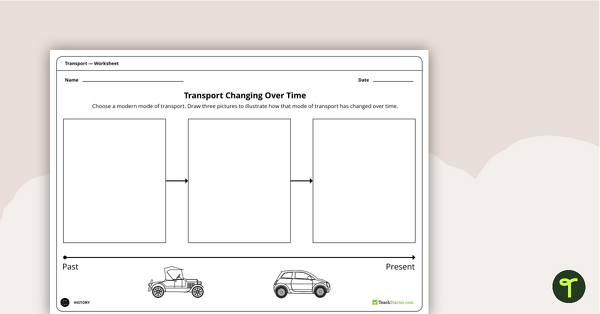
Transport Changing Over Time - Timeline Worksheet
A worksheet for students to illustrate how transport has changed over time.
- Plus Plan

Landform Word Wall Vocabulary
Show your students examples of different landforms with a set of printable Landform word and picture cards.
- Free Plan

Natural and Built Environments Sort Activity
A natural and built environments sort activity.
- Plus Plan

Continuity and Change Worksheets
A set of four worksheets to use when exploring continuity and change.
- Free Plan
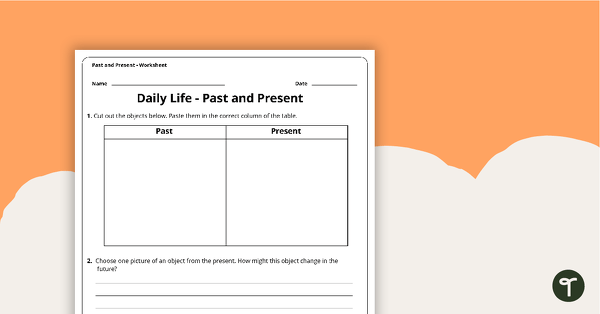
Daily Life - Past and Present
A worksheet to use when exploring daily life in the past and present.
- Plus Plan

Printable Weather Recording Charts
Use these printable weather charts to graph and analyse the weather for each month.
- Plus Plan

Natural and Built Environments - Display Elements
Build a Natural vs. Manmade Environment bulletin board with a set of decorative elements.
- Plus Plan

Our Natural and Built Environments - Poster Pack
Poster with definitions and examples of natural and built environments.
- Plus Plan

NAIDOC Week 2022 – Teacher Information Sheet
A teacher information sheet about the NAIDOC 2022 theme: “Get Up! Stand Up! Show Up!”
- Plus Plan

NAIDOC Week 2022 Comprehension Activity
A worksheet with text and comprehension questions exploring the 2022 NAIDOC theme.
- Plus Plan
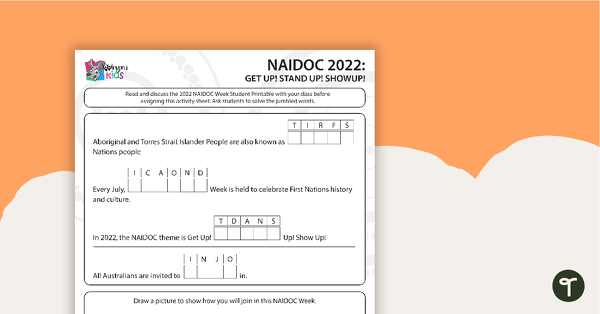
NAIDOC Week 2022 Jumbled Word Puzzle
A student word puzzle focusing on topic words from the information sheet about the NAIDOC 2022 theme: “Get Up! Stand Up! Show Up!”.
- Plus Plan

NAIDOC Week 2022 – Student Information Sheet
A student information sheet about the NAIDOC 2022 theme: “Get Up! Stand Up! Show Up!”.
- Plus Plan

NAIDOC 2021 – Heal Country! - Worksheet (Early Years)
A worksheet for students to reflect on the NAIDOC theme as it relates to them.
- Plus Plan

NAIDOC 2021 – Heal Country! Teacher information sheet
A teacher information sheet about the NAIDOC 2021 theme: Heal Country!
- Plus Plan

NAIDOC 2021 – Heal Country! Student information sheet
A student information sheet about the NAIDOC 2021 theme: Heal Country!
- Plus Plan

Why Teach About Bush Tucker? Poster
An educational poster providing a rationale for teaching Australian children about bush tucker.
- Plus Plan

Spaces and Places – Word Wall Vocabulary
30 spaces and places word wall vocabulary cards.
- Plus Plan

Animal Powered Transport - Worksheet
A worksheet for students to identify how animals can be used as a mode of transport.
- Plus Plan

Life Without Transport - Worksheet
A worksheet for students to identify how we use transport in our daily lives.
- Free Plan

What Toy Am I? - Toy Definition Match Up Game
A set of 20 puzzle cards for students to match pictures of toys to their definition.
- Plus Plan

Five Australian Landmarks Posters
A set of 5 posters highlighting some of Australia's most famous Landmarks.
- Plus Plan

What Places Are Like - Geography Word Wall Vocabulary
23 features of places vocabulary word wall cards.
- Plus Plan

How People Use Places - Geography Word Wall Vocabulary
40 places and their uses vocabulary word wall cards.
- Plus Plan
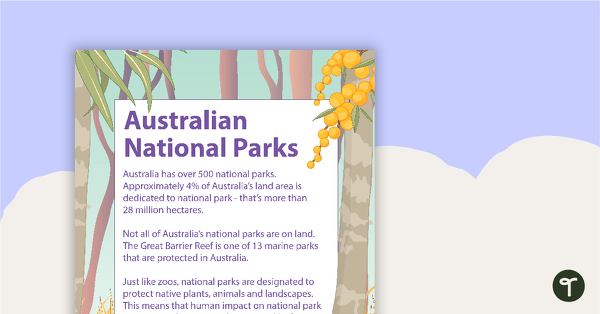
6 Australian National Parks Posters
A set of six posters with information about Australian National Parks, including how to care for them.
- Plus Plan
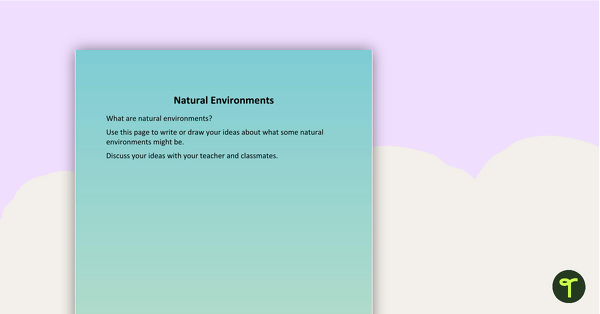
Natural and Built Environments - Brainstorming Pages
A sheet that provides your students with a space to write or draw their ideas.
- Plus Plan

Built Environments Concept Map
A concept map to use when learning about built environments.
- Plus Plan

Past and Present - Title Poster
A poster to display in your classroom when learning about the past and present.
- Plus Plan

Past, Present and Future Poster
A poster with definitions of the past, present and future.
- Plus Plan

Past and Present Teaching Resource Pack
A teaching resource pack of cut-out decorations, posters, games, PowerPoint presentations and worksheets about the past and present.
- Plus Plan

Natural and Built Environments Teaching Resource Pack
A pack of posters and worksheets to be used when teaching a unit of work on natural and built environments.
- Plus Plan

Daily Life - Then and Now Unit Plan
This History unit covers a range of concepts relating to how daily life of the present is different from the past and how it could change in the future.
- Plus Plan
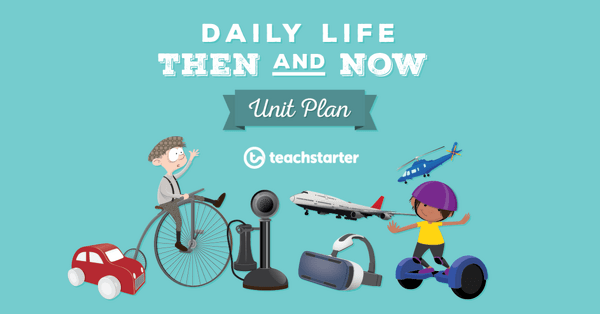
Toys From the Past
A 60 minute lesson in which students will compare toys from the past with the present.